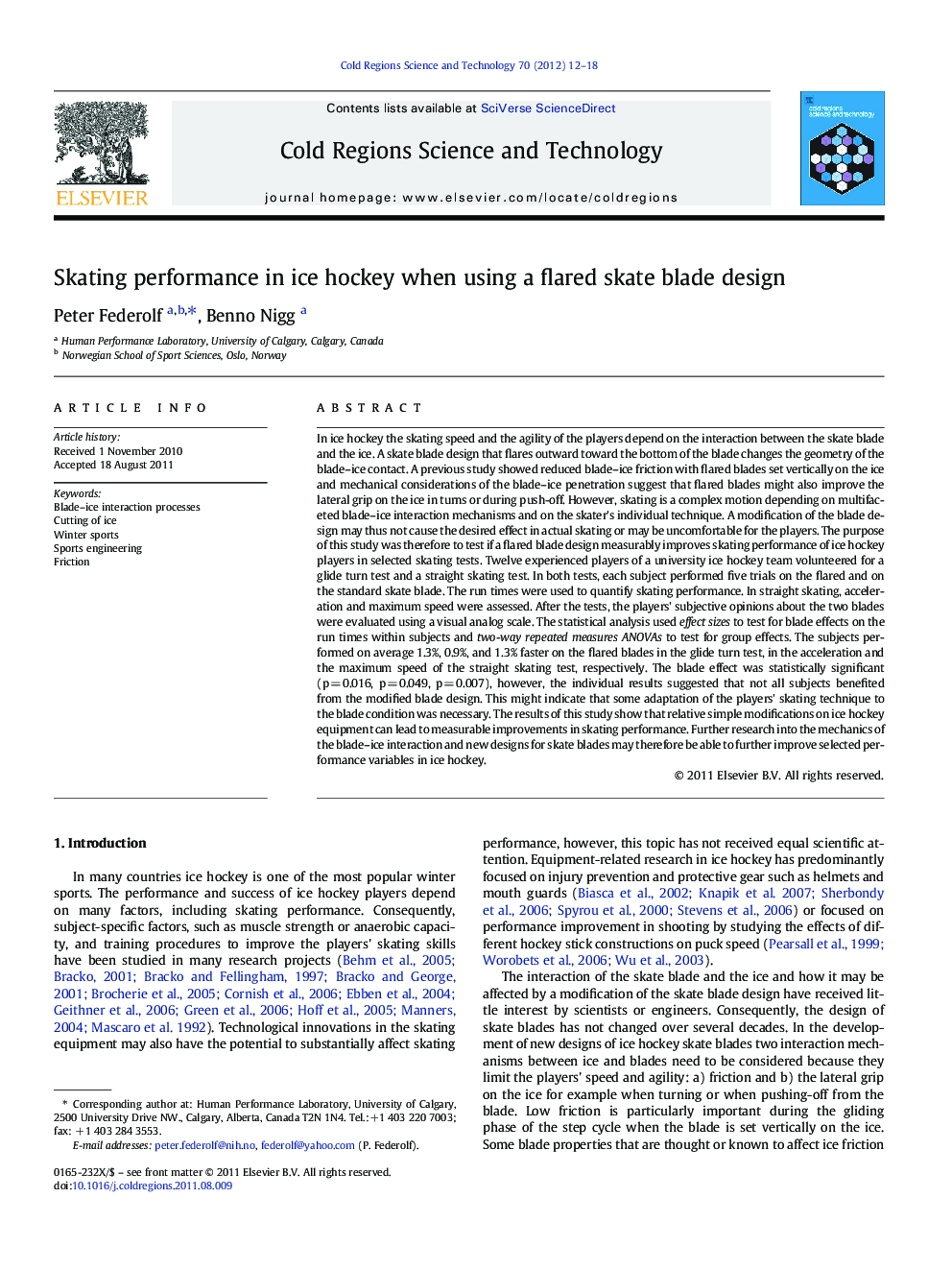| کد مقاله | کد نشریه | سال انتشار | مقاله انگلیسی | نسخه تمام متن |
|---|---|---|---|---|
| 4676045 | 1634487 | 2012 | 7 صفحه PDF | دانلود رایگان |

In ice hockey the skating speed and the agility of the players depend on the interaction between the skate blade and the ice. A skate blade design that flares outward toward the bottom of the blade changes the geometry of the blade–ice contact. A previous study showed reduced blade–ice friction with flared blades set vertically on the ice and mechanical considerations of the blade–ice penetration suggest that flared blades might also improve the lateral grip on the ice in turns or during push-off. However, skating is a complex motion depending on multifaceted blade–ice interaction mechanisms and on the skater's individual technique. A modification of the blade design may thus not cause the desired effect in actual skating or may be uncomfortable for the players. The purpose of this study was therefore to test if a flared blade design measurably improves skating performance of ice hockey players in selected skating tests. Twelve experienced players of a university ice hockey team volunteered for a glide turn test and a straight skating test. In both tests, each subject performed five trials on the flared and on the standard skate blade. The run times were used to quantify skating performance. In straight skating, acceleration and maximum speed were assessed. After the tests, the players' subjective opinions about the two blades were evaluated using a visual analog scale. The statistical analysis used effect sizes to test for blade effects on the run times within subjects and two-way repeated measures ANOVAs to test for group effects. The subjects performed on average 1.3%, 0.9%, and 1.3% faster on the flared blades in the glide turn test, in the acceleration and the maximum speed of the straight skating test, respectively. The blade effect was statistically significant (p = 0.016, p = 0.049, p = 0.007), however, the individual results suggested that not all subjects benefited from the modified blade design. This might indicate that some adaptation of the players' skating technique to the blade condition was necessary. The results of this study show that relative simple modifications on ice hockey equipment can lead to measurable improvements in skating performance. Further research into the mechanics of the blade–ice interaction and new designs for skate blades may therefore be able to further improve selected performance variables in ice hockey.
► Ice hockey skate blade design might affect ice friction or the blade's lateral grip.
► Twelve elite ice hockey players conducted performance tests with two blade designs.
► A flared blade allowed improved run times in straight skating and in a turning test.
► Adaptations in the skating technique may be necessary to benefit from the new blade.
Journal: Cold Regions Science and Technology - Volume 70, January 2012, Pages 12–18